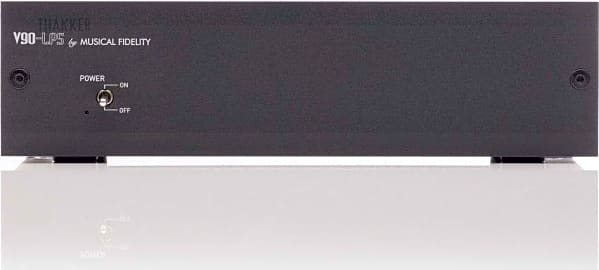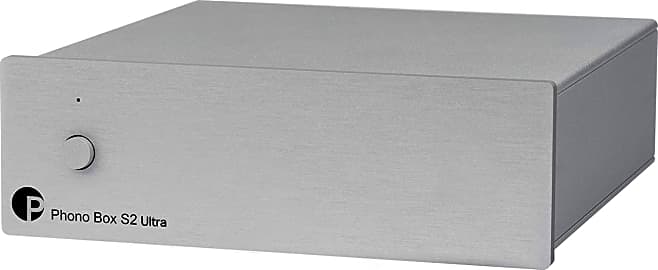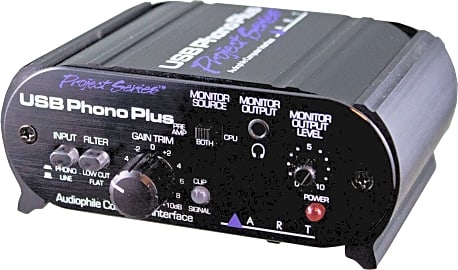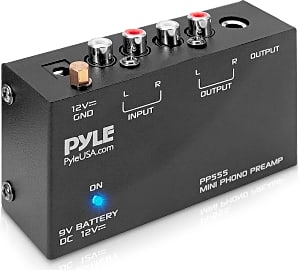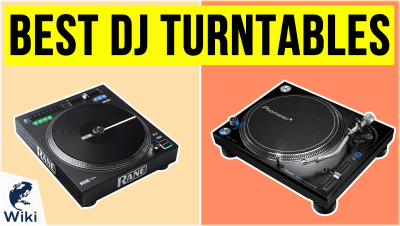The 10 Best Phono Preamps

This wiki has been updated 38 times since it was first published in November of 2016. With vinyl enjoying a resurgence in popularity, those of you with LP collections may be looking to buy one of these phono preamps, in order to boost your record player's signal up to line level. We've included models designed for moving magnet and magnetic coil cartridges, so everyone from serious audiophiles to gigging DJs will find something suitable for their needs. When users buy our independently chosen editorial recommendations, we may earn commissions to help fund the Wiki.
Editor's Notes
February 05, 2021:
While their primary function is as line-level signal boosters, a phono preamp can make a notable difference to the quality of the audio coming from your record deck. In particular, the sub-sonic, or "rumble" filters, such as those found on the Rolls Bellari VP549, Cambridge Audio Alva Duo, and iFi Audio Zen, are effective in removing the low-frequency noise associated with damaged or degraded vinyl.
The latter two mentions are new inclusions on this latest update and represent two mid-priced options that produce impressive results, as well as being aesthetically pleasing. We also upgraded the Pro-Ject Audio Box S2 to the Pro-Ject Phono Box S2 Ultra, which features improved circuitry that includes audiophile-quality polystyrene capacitors.
At the pro-audio end of our list, we included the Rega Aria V2, which is the flagship model from this much-lauded brand. Providing punchy and highly responsive sound with analog warmth in abundance, this expensive option demands a worthy turntable to match its class. On the other end of the spectrum, the reliable Pyle Mini offers a simple and affordable solution to getting signal into your amplifier, as well as optional 9-volt battery power and a 1/4-inch output jack.
January 06, 2020:
Since our last visit to this ranking, a number of more recently developed models by trusted brands have proven themselves worthy to take the place of the standard-bearers that they were meant to dethrone. We can now safely say, for example, that the increased size and cost of the Rolls Bellari VP549 as compared to its predecessor, the compact and reliable VP29, are more than justified by the newer model's audio fidelity and performance. Its rumble filter is particularly adept at controlling unwanted hum and low-frequency noise that other models may neglect in favor of tackling more traditional high-end interference that doesn't plague the Rolls, to begin with.
We also included the phenomenal Musical Fidelity M6 Balanced, which is decidedly intended for professionals, not just because it's capable of combining signals from up to three turntables, but because no one but professionals (or madly enthusiastic audiophiles) would pay what the company wants for it. There are other DJ-targeted models out there, like the Art USB Plus, but this one takes the cake. That Art model is also an upgrade, it's worth noting, to the Art Pro DJPre II, which was one of the most beloved models in its class for over a decade, but which was upgraded a few years back to the USB, and which has finally supplanted it as a go-to for creatives on a budget.
What Does A Phono Preamp Do?
Any system with an input designated PHONO has a preamp in it.
A phono preamp is an important and often overlooked piece of audio equipment. Other names for a phono preamp include a phono stage, RIAA preamp, or turntable preamp. The basic job of the phono preamp is to boost the smallest signals produced by a turntable. These boosted signals can then drive the power amplifier, which in turn drives the speakers. Without the phono preamp, there is not enough power to deliver the correct sound through the speakers.
The phono preamp also applies RIAA curve to the signal. The reason for a need of this special EQ curve is due to the long wavelengths of low frequencies. The grooves these frequencies make are difficult for the needle to play back correctly. Put simply, the RIAA curve boosts high frequencies while reducing low frequencies. The phono preamp then uses an inverse of this curve to balance the track back out. This has two effects. The first is that it makes the grooves for low frequencies much easier to balance. The second is that the process also improves the overall quality of the sound by reducing noises like hissing and ringing. Phono preamps are a requirement for listening to vinyl records on an external sound system.
There are many turntables with built-in speaker systems that have the necessary preamp within them already. It is easy enough to figure out if your model does or does not. If the turntable is connected to the sound system and produces sound at the proper level with no distortion, it more than likely has a built-in phono preamp. Many older amplifiers or sound systems have preamps built in. Any system with an input designated PHONO has a preamp in it. This is very common in receivers or amplifiers made around 1980 or before.Turntables with USB outputs have built-in preamps as well, as they have to convert the input to make it compatible for USB.
Getting The Best Sound From A Phono Preamp
The quality of sound coming from a phono preamp will rely largely on the quality of the other components of the system. For instance, it may be hard to judge the quality of a preamp using low-end speakers. Issues with gain and distortion that are usually blamed on the phono preamp may actually be caused by the speakers themselves. The ideal speakers are neutral, clear, and leave plenty of room for the high resolution of the vinyl sound to shine through. There is no ideal shape or size. Some users favor large floor speakers while others like the freedom of bookshelf speakers.
Having a phono preamp that easily adjusts to the needs of the user's specific cartridge is vital.
The turntable's cartridge may be the largest determining factor in the choice of phono preamp. Cartridges are typically either moving magnet or moving coil. Both cartridges run a needle along the grooves of the LP to create vibration. It is how they do so that differs.
In MM cartridges, sound is translated by attaching a magnet to the top end of the needle. This magnet rests in between two responsive coils. Vibrations in the magnet create currents in the coils, which are then carried to the preamp. MC cartridges work in the opposite way. They have tiny wire coils attached to the needle that vibrate between magnets. This is believed to increase the responsiveness of the needle. The price of this needle agility is a reduction in signal strength. MC cartridges will typically require more gain that MM cartridges to avoid distorting the sound at the end of the signal. Having a phono preamp that easily adjusts to the needs of the user's specific cartridge is vital.
Creating The Ideal Sound From A Turntable
The resurgence of vinyl is caused in part by nostalgia, but has more to do with the modern listener’s desire for a high-quality sound. Vinyl is considered by many to be the epitome of sound quality. Whether or not this is true is cause for another article all together. The fact remains that vinyl is the only format available to consumers that is both analog and lossless.
The resurgence of vinyl is caused in part by nostalgia, but has more to do with the modern listener’s desire for a high-quality sound.
Analog audio offers users a direct duplication of the original recorded soundwaves. Vinyl records are the classic example, as pressing a recording to vinyl does not change the sound in any way. It comes out just as it was recorded. Cassette tapes are a slightly more modern example. They utilize magnetic recording to permanently adhere sound to the tape inside the cassette. One distinct advantage of cassettes is the ability to erase and re-record. This may also be a disadvantage when compared to vinyl. Where vinyl provides a permanent recording, cassette recordings can fade over time or by coming into contact with magnets.
In the digital world, lossless audio refers to audio compression that does not change the original recording. FLAC or WAV files are good examples of lossless audio, and MP3 files are usually compressed audio files. During compression, the size of the file itself is reduced. This makes it easier to download, share, and store these files, but it does come at a price. Compression usually achieves this size reduction by eliminating wavelengths that should be well outside the normal range of the human ear. This usually results in a large chunk of the file being removed. Theoretically, lossless compression manages to reduce the file size of the original recording without removing any minute details from the sound. Provided that high quality speakers and amplifiers are used, the listener would technically be hearing audio just as it was recorded.
Vinyl on the other hand requires no additional processes to produce lossless audio. A turntable using accurate needles, coupled with a high quality phono preamp and clear speakers, will produce audio exactly as it was recorded. Vinyl enthusiasts believe this process is much more favorable, as it is not subject to the digital decoding and recoding of the audio file. They feel it gives the audio unrivaled warmth that is missing in all other formats. Much of this debate is subjective, though.



